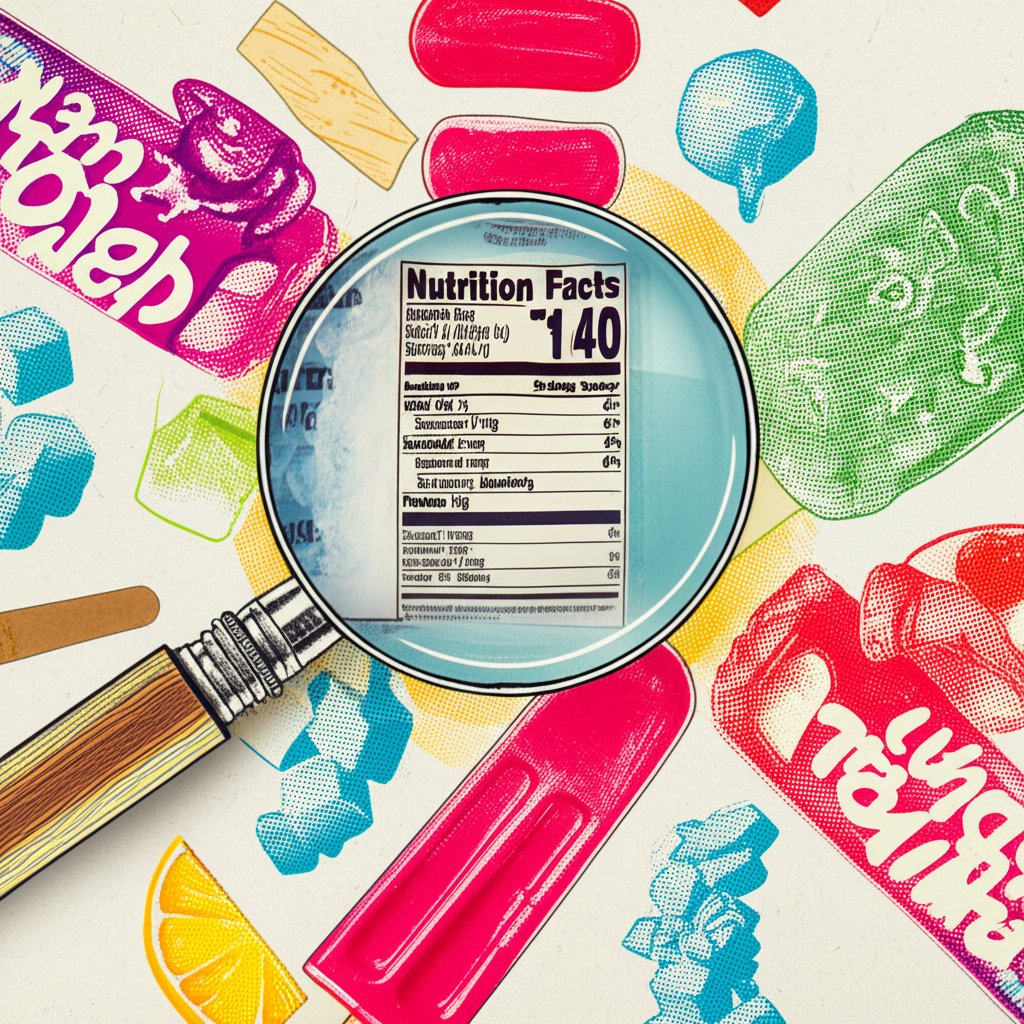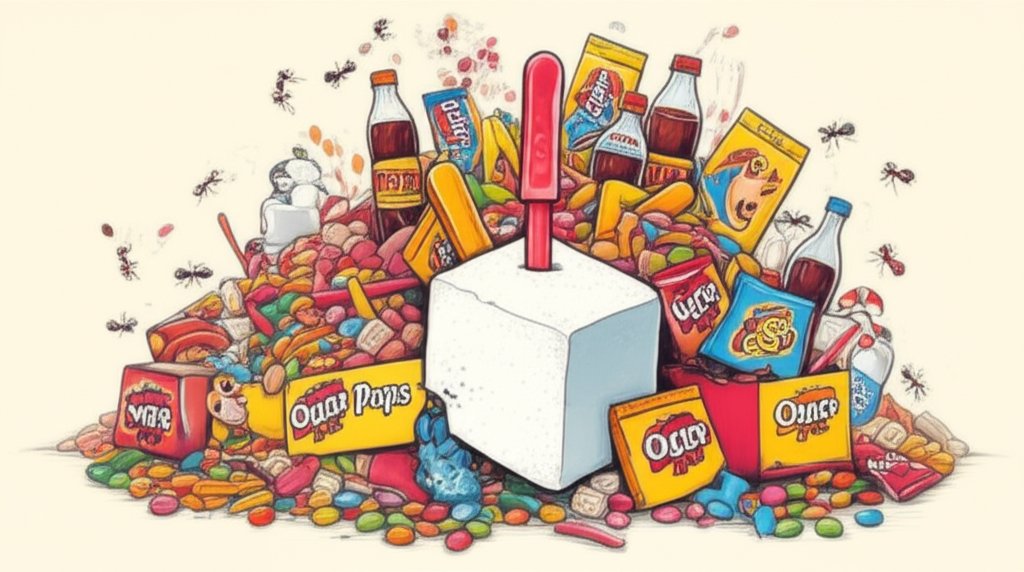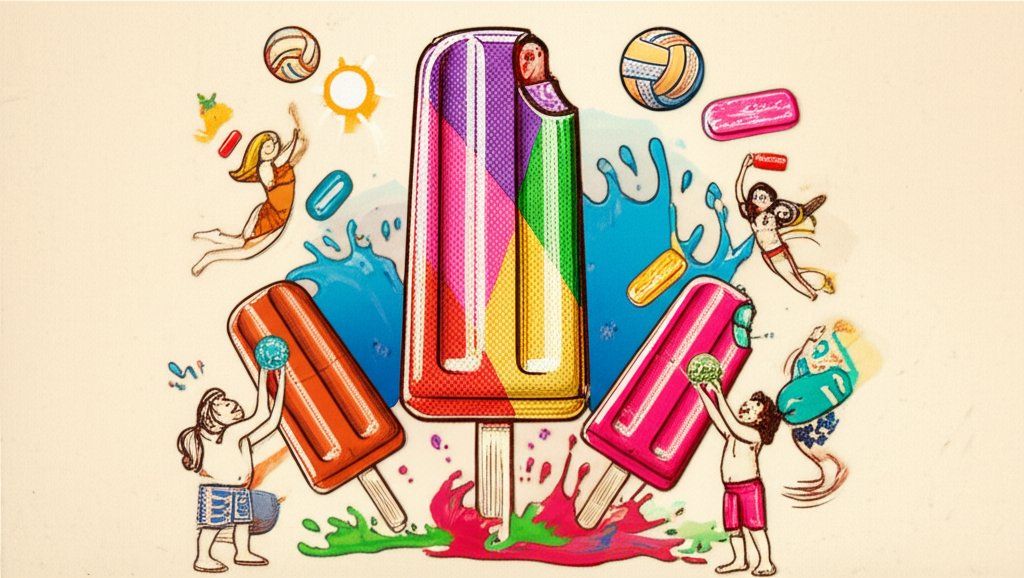Craving a sweet, icy treat on a hot day? Otter Pops are a nostalgic favorite, but are the otter pops nutrition facts something you should be concerned about? While they might seem harmless, let’s dive into what’s really in these colorful freezer pops and how they stack up against healthier choices, like a lean, protein-packed NY Strip Steak (seriously!).
At a Glance:
- Discover the full nutritional profile of Otter Pops, including sugar, calories, and potential artificial ingredients.
- Compare Otter Pops to healthier snack alternatives to make informed decisions for yourself and your kids.
- Learn how to enjoy Otter Pops in moderation and make smart swaps for a more balanced diet.
- Understand the impact of artificial sweeteners and food dyes commonly found in Otter Pops.
- Get practical tips for creating your own healthier homemade freezer pops.
Unpacking the Otter Pops Nutrition Facts Label: What’s Really in That Freezer Pop?
Let’s face it: the bright colors and fun shapes of Otter Pops are appealing. But a peek at the nutrition label reveals a story beyond the nostalgia. The primary concern with otter pops nutrition facts is their high sugar content and use of artificial ingredients.
A single Otter Pop (approximately 1 oz or 30 ml) typically contains:
- Calories: Around 15-25 calories
- Sugar: 3-6 grams, primarily from high fructose corn syrup or sugar
- Fat: 0 grams
- Protein: 0 grams
- Sodium: Very minimal, usually around 0-5mg.
Notice anything missing? Essential vitamins, minerals, fiber, healthy fats, and protein are all absent. Otter Pops provide a quick burst of sweetness but offer little nutritional value. In other words, they are essentially sugar water frozen into a convenient shape.
The Sugar Problem: How Otter Pops Contribute to Sugar Overload
The quantity and type of sugar matters in the otter pops nutrition facts. Most Otter Pops brands rely on high fructose corn syrup (HFCS) as their primary sweetener. HFCS has been linked to various health concerns, including increased risk of obesity, type 2 diabetes, and liver problems. While the amount of sugar per pop might seem small, multiple pops throughout the day can quickly add up to a significant sugar load, especially for children. For context, the American Heart Association recommends limiting added sugar to no more than 25 grams per day for women and 36 grams per day for men. A few Otter Pops can easily push you closer to that limit without providing any offsetting benefits.
Are Artificial Sweeteners and Food Dyes a Concern?

Many Otter Pops also contain artificial sweeteners, such as sucralose or aspartame, and artificial food dyes like Red 40, Yellow 5, and Blue 1. While these additives are generally recognized as safe in small amounts by regulatory agencies, some studies suggest potential links to hyperactivity in children and other adverse health effects in sensitive individuals.
- Artificial Sweeteners: Can contribute to a preference for sweet tastes and may disrupt gut health in some individuals.
- Artificial Food Dyes: Have been linked to hyperactivity in some children, although more research is needed.
If you’re concerned about these potential effects, opting for all-natural freezer pops or making your own at home is a better alternative.
Otter Pops vs. NY Strip Steak: A Nutrition Showdown
Let’s be real, there’s no true comparison nutritionally. While an Otter Pop offers a fleeting moment of sweetness, a NY Strip Steak provides a wealth of essential nutrients. As discussed in Is Ny Strip Steak Healthy?, lean cuts of beef are packed with protein, iron, zinc, and B-vitamins, all crucial for muscle building, energy production, and overall health. You can’t say the same for Otter Pops.
Here’s a table comparing a single Otter Pop to a 3-ounce serving of NY Strip Steak:
| Nutrient | Otter Pop (1 oz) | NY Strip Steak (3 oz, grilled) |
|---|---|---|
| Calories | 15-25 | 220-300 |
| Protein | 0g | 23-27g |
| Fat | 0g | 12-18g |
| Sugar | 3-6g | 0g |
| Iron | 0% DV | 8% DV |
| Zinc | 0% DV | 35% DV |
| Vitamin B12 | 0% DV | 50% DV |
| DV = Daily Value (based on a 2,000 calorie diet) |
Smart Snacking: Healthier Alternatives to Otter Pops
While the occasional Otter Pop isn’t going to derail your health goals, making them a regular habit can contribute to excess sugar intake and nutrient deficiencies. Here are some healthier snack alternatives:
- Frozen Fruit: Blend frozen berries, bananas, or mangoes for a naturally sweet and nutritious treat.
- Yogurt Parfaits: Layer Greek yogurt with berries and a sprinkle of granola for added protein and fiber.
- Homemade Popsicles: Blend fruit juice, coconut water, or smoothies and freeze them in popsicle molds.
- Fruit Salad: Combine a variety of colorful fruits for a refreshing and vitamin-packed snack.
- Vegetables and Hummus: Crunchy vegetables like carrots, celery, and cucumbers paired with hummus provide fiber, protein, and healthy fats.
A Case Snippet:
“I used to give my kids Otter Pops every afternoon after school,” says Sarah, a mom of two. “But after learning about the high sugar content and artificial ingredients, I started making my own fruit popsicles. They love them just as much, and I feel good knowing they’re getting actual nutrients.”
How to Enjoy Otter Pops in Moderation: A Practical Guide

If you or your kids enjoy Otter Pops, there’s no need to eliminate them entirely. The key is moderation and mindful consumption. Here’s a step-by-step guide:
- Set Limits: Establish clear rules about how often Otter Pops can be consumed (e.g., once a week as a special treat).
- Read Labels: Compare different brands and opt for those with lower sugar content and fewer artificial ingredients.
- Pair with Protein: If you or your child is having an Otter Pop, pair it with a source of protein, such as a handful of nuts or a small piece of cheese, to help stabilize blood sugar levels.
- Hydrate with Water: Encourage drinking plenty of water throughout the day to help flush out excess sugar and stay hydrated.
- Make Homemade Alternatives: Get creative in the kitchen and experiment with making your own healthier freezer pops using fresh fruits, yogurt, or blended smoothies.
Making Your Own Healthy Freezer Pops: A Recipe for Success
Creating your own freezer pops is a fun and easy way to control the ingredients and boost the nutritional value. Here’s a basic recipe to get you started:
Ingredients:
- 2 cups of your favorite fruit (e.g., berries, mangoes, pineapple)
- 1 cup of liquid (e.g., coconut water, fruit juice, yogurt, or unsweetened almond milk)
- Optional: A squeeze of lemon or lime juice for added flavor
- Optional: A tablespoon of honey or maple syrup for added sweetness (use sparingly)
Instructions:
- Combine all ingredients in a blender and blend until smooth.
- Pour the mixture into popsicle molds.
- Insert popsicle sticks.
- Freeze for at least 4-6 hours, or until solid.
- To unmold, run the molds under warm water for a few seconds.
Variations:
- Green Smoothie Pops: Blend spinach, kale, banana, and apple juice for a nutrient-packed green pop.
- Yogurt Berry Pops: Layer Greek yogurt with mashed berries in popsicle molds for a creamy and protein-rich treat.
- Tropical Pops: Combine pineapple, mango, and coconut water for a tropical-flavored pop.
Quick Answers: Addressing Common Questions About Otter Pops
Here are some brief answers to common questions about Otter Pops nutrition facts and their impact on health:
- Are Otter Pops better than ice cream? While lower in calories and fat, Otter Pops are primarily sugar water and lack the nutritional value found in some ice cream options (especially those with added nuts or fruit).
- Can Otter Pops cause hyperactivity in children? The artificial food dyes in Otter Pops have been linked to hyperactivity in some children, though more research is needed.
- Are sugar-free Otter Pops a healthier option? Sugar-free Otter Pops replace sugar with artificial sweeteners, which may have their own potential health concerns. They are still a better choice than the sugar version if you watch calories, but not necessarilly the best snack.
- Can I include Otter Pops in a weight-loss diet? Because of their high sugar content and low nutrient density, Otter Pops aren’t ideal for weight loss.
- Are Otter Pops safe for people with diabetes? Consult with a healthcare professional or registered dietitian before consuming Otter Pops if you have diabetes, as the high sugar content can affect blood sugar levels.
Actionable Close: Making Informed Choices for a Healthier Lifestyle
While Otter Pops can be a part of childhood memories and occasional treats, understanding the otter pops nutrition facts empowers you to make informed decisions about your diet and your family’s. By choosing healthier alternatives, enjoying them in moderation, and prioritizing nutrient-rich foods like NY Strip Steak, you can strike a balance between enjoying life’s little pleasures and supporting overall well-being. So, the next time you reach for a freezer pop, ask yourself if there’s a more nutritious option that can satisfy your craving and fuel your body!
- Why Glass Boxes for Lunch Are Trending for Meal Prep - December 17, 2025
- Bento Box Glass Offers Practical, Eco-Friendly Meal Storage - December 16, 2025
- The Best Bento Box Price For Your Perfect Packed Lunch - December 15, 2025










